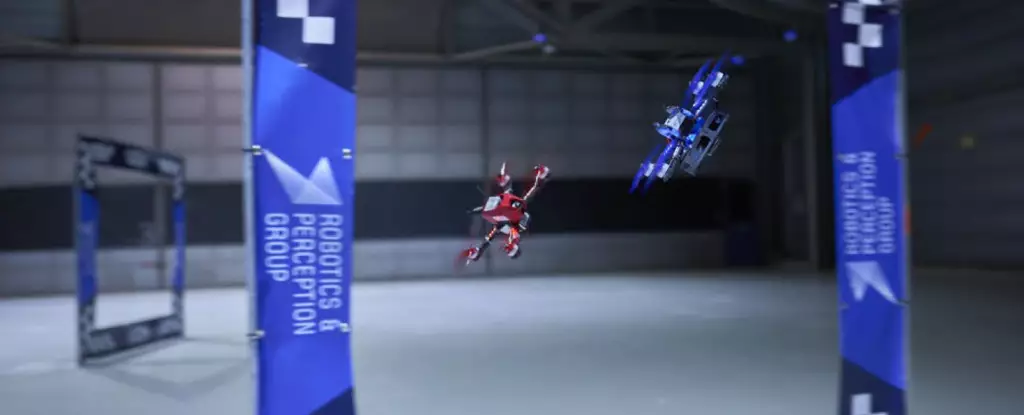Artificial intelligence (AI) is rapidly progressing and reaching new heights, showcasing abilities that surpass or match those of humans in simulations and test environments. Aside from the ethical and environmental concerns surrounding AI and autonomous drones, we can’t help but be amazed by the latest accomplishment: an AI-controlled drone system called Swift, which consistently outmaneuvered three professional drone pilots in a series of head-to-head races.
Designed by Elia Kaufmann, a robotics engineer at the University of Zurich, in collaboration with researchers at Intel Labs, Swift is an autonomous system that astoundingly won 15 out of 25 races against world-champion human pilots. The race track was specially crafted by a professional drone-racing pilot, featuring sweeping turns and screeching pivots. What makes Swift truly remarkable is its ability to combine AI-learning algorithms with a single camera and onboard sensors, eliminating the need for external motion cameras used in previous autonomous racing drones.
Autonomous drone racing presents a significant challenge because the robot must fly to its physical limits while accurately estimating its speed and location solely based on onboard sensors. Swift overcomes this challenge by employing an onboard camera and an inertial sensor to measure acceleration and rotation. With the data collected, two AI algorithms analyze and triangulate the drone’s position in relation to the square gates on the obstacle course. This information then informs the control commands, enabling Swift to maneuver through the course effectively.
Although Swift did lose 40 percent of the races, it managed to beat each human pilot multiple times and achieved the fastest recorded race time, surpassing the best human time by half a second. An analysis conducted by Kaufmann and his colleagues revealed that, on average, Swift achieved the highest speed, identified the shortest racing line, and operated the aircraft closer to its actuation limits throughout the race.
The Innovation of Deep Reinforcement Learning
Guido de Croon, a robotics researcher at Delft University of Technology in the Netherlands, commented on the study, highlighting Swift’s “true innovation.” The system employs a second artificial neural network that utilizes deep reinforcement learning. Through this approach, the network learns primarily through trial and error during the training process, adapting its controls to real-world scenarios. Similar to the human pilots who practiced on the track for a week, Swift trained in a simulation of the race track. Using a deep learning algorithm, it explored various paths through the seven gates to discover faster routes.
With control commands optimized and mapped out, Swift proceeded to undergo a few test runs around the race track while processing visual inputs. Furthermore, the neural network learned the subtle differences between the simulation and reality, enabling it to improve the simulation and refine its strategy. This iterative process allowed Swift to enhance its performance and bridge the gap between virtual and physical environments.
While Swift’s achievements in navigating physical obstacles are impressive, there is still room for development before it can navigate unpredictable outdoor conditions effectively. De Croon notes that drones acquire sensing information more rapidly than human pilots, who heavily rely on delayed images. Therefore, it is only a matter of time before autonomous drones surpass human pilots even under the most demanding conditions.
The recent success of Swift, the AI-controlled drone system, sheds light on the remarkable progress of artificial intelligence in surpassing human capabilities. The combination of AI-learning algorithms, onboard sensors, and deep reinforcement learning contributes to Swift’s ability to outperform professional pilots in head-to-head races. As technology continues to advance, we can anticipate further advancements in autonomous systems, unlocking new possibilities in various fields.


Leave a Reply